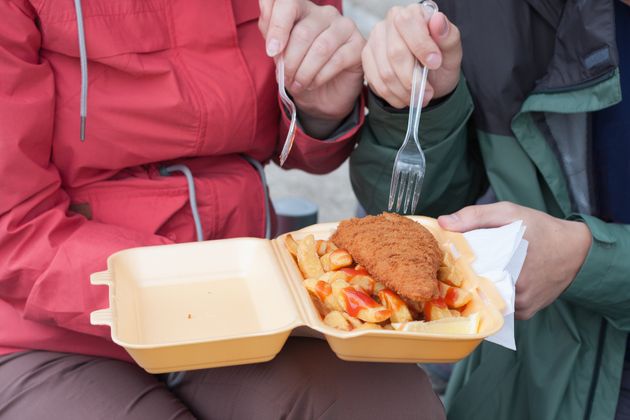
It’s National Fish and Chip Day, a day for producers to encourage us to celebrate the nation’s favourite dish. And it looks like shoppers’ relationship to fish has been changing. The Blue Planet effect means we are paying attention to how our shopping affects the oceans, and in the last few months climate change has exploded back onto the political agenda. The oceans are not immune from the impacts of the climate crisis. So how do we make sure the British classic isn’t contributing to it? And why is the sustainable seafood industry silent about all this?
Eco-labels like the MSC’s ‘blue tick’ aim to help us make the right choices when shopping for seafood. MSC certified fisheries have to show that they fish only from healthy populations, minimise environmental impact from fishing, and manage fishing operations sustainably. Without a doubt, these are vital standards , but they ignore the elephant in the room: climate change.
Everything we produce and consume has a carbon footprint.. Even though protein from seafood often has a lower carbon footprint than other animal proteins, the inconvenient truth is that their climate impacts are complicated.
Greenhouse gas emissions from fish vary wildly depending on catching, processing and transport methods. Most emissions in commercial fisheries come from boat fuel, which is subsidised in the UK and most other countries. Fuel use can range from under 80 litres per ton of sardines to over 10,000 litres per ton of lobster. This means greenhouse gas emissions vary a lot between species. They can be as low as for a bell pepper (for herring), as much as eggs (salmon), or higher than pork (shrimp). Transport is another big cause of emissions, especially for seafood that requires air transport so it can be sold live.
And while the fishing industry creates greenhouse gas emissions, fish are impacted by climate change. Scientists recently found that marine species are particularly vulnerable to temperature changes, and that hotter waters are now the biggest threat to marine biodiversity, even bigger than overfishing and plastics.
Climate change and overfishing can work together to create a vicious circle. On one side, fishing from healthy fish populations produces less carbon emissions than from overfished populations. If there are more fish in the sea, boats don’t have to travel as far and spend less time at sea. This reduces fuel use, but also emissions from things like refrigerating catch onboard. At the same time, healthier fish populations are more resilient to changes like warming waters and ocean acidification, because they have enough reproductive capacity to cope with the stress. This means overfished populations can recover more quickly if they don’t face additional stress, like the effects of climate breakdown. On the other side, warmer ocean waters mean that fish in the Northern Hemisphere head to colder seas further north. Fishers have to travel further to reach them, opening new fishing grounds and burning more fossil fuels.
In an ideal word, government regulation and markets would function well enough that we would not need eco-labels to direct us to the most sustainable seafood. In reality, while the EU’s Common Fisheries Policy aims to end overfishing by 2020, Member States including the UK are way off track to achieving this and continue to set fishing limits above scientific advice. As long as this gap between aspiration and reality exists, eco-labels will have an important role to play.
The MSC blue tick incentivises more sustainable fisheries management, so even though it doesn’t include carbon emissions, it can offset some of the negative climate effects on fisheries. But wouldn’t it be better to cut carbon in the first place? The climate effects of fishing should be included in sustainability labels so we can all make more informed decisions about what we take from the oceans.
Without a doubt, this is a highly complex and challenging task. The more measures that are included in a definition of sustainability, the less likely it is that fisheries can ‘tick’ them all. Some fisheries face complex trade-offs between lowering their carbon footprint and other aspects of sustainability. High-end products like live lobster are caught with traps that have a low-impact on the seafloor but the weight of the catch is relatively small so more fuel is used per tonne of seafood.
We need to drastically reduce carbon emissions in the next few decades, so every industry needs a strategy. When you face an existential problem like the climate crisis, “all policy is climate policy”. While more research needs to happen before before it can be rolled out, for eco-labels this means working towards including climate in their measurements of sustainability, even if it is a daunting challenge.